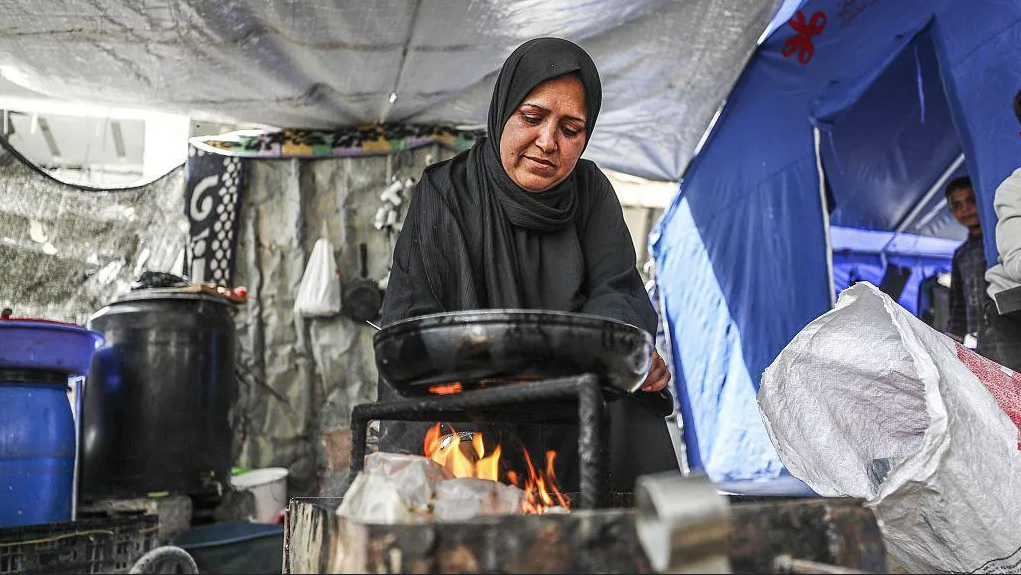COMMUNITY members of the N#a Jaqna Conservancy and Community Forest in the area west of Tsumkwe have joined forces with the Directorate of Forestry and its Community Forestry advisers to help natural regeneration of camelthorn (Acacia erioloba) trees in their area.
M’kata villagers and children of the M’kata Primary School sowed seeds in the community forest area of the conservancy. The area was chosen for the lack of natural regeneration there.Although there are still a number of very old camelthorn trees in that area, almost no younger trees can be found – a situation that will eventually lead to deforestation.Realising the situation, the Conservancy and Community Forestry Committee of N#a Jaqna Conservancy initiated the direct seeding trial.It aims to find out how the natural generation process can be supported under given conditions.The use of artificial water sources, for instance, was not considered – germination has to be initiated by natural rainfall.However, to support this process, the camelthorn seeds were partly pre-treated by soaking them in water or boiling them for some time.This simulates natural conditions where seeds often germinate only after passing through the digestive tract of animals.Staff from the Directorate of Forestry and the Community Forestry in Namibia project advised the villagers on the set-up of the trial and will closely supervise the results.”If the direct seeding turns out to be successful and new seedlings grow in the area, the Forestry authority needs to assist in fire management measures to prevent the destruction of the new trees by wildfires,” said Johannes Herero of the Agriculture Ministry.It is hoped that at least 50 per cent of the seeded area will show sufficient germination during the upcoming rainy season.Since the costs of this activity were low, direct seeding could then become an alternative to initiate forest regeneration in many other areas.According to FAO statistics, Namibia loses almost one per cent – around 80 000 hectares – of its forests every year.The trees are used for construction, as firewood, are harvested illegally or killed by veld fires.Growing a tree, on the other hand, is very difficult.The climate is not favourable, especially since water is a scarce resource.Namibia needs its trees because they provide shade, food and fodder, store water and carbon dioxide and cater for various other needs of people and wildlife.Therefore, measures to support tree regeneration are necessary.To be successful, such measures have to be “close to nature”, copying the natural conditions in order to let the trees survive.The area was chosen for the lack of natural regeneration there.Although there are still a number of very old camelthorn trees in that area, almost no younger trees can be found – a situation that will eventually lead to deforestation.Realising the situation, the Conservancy and Community Forestry Committee of N#a Jaqna Conservancy initiated the direct seeding trial.It aims to find out how the natural generation process can be supported under given conditions.The use of artificial water sources, for instance, was not considered – germination has to be initiated by natural rainfall.However, to support this process, the camelthorn seeds were partly pre-treated by soaking them in water or boiling them for some time.This simulates natural conditions where seeds often germinate only after passing through the digestive tract of animals.Staff from the Directorate of Forestry and the Community Forestry in Namibia project advised the villagers on the set-up of the trial and will closely supervise the results.”If the direct seeding turns out to be successful and new seedlings grow in the area, the Forestry authority needs to assist in fire management measures to prevent the destruction of the new trees by wildfires,” said Johannes Herero of the Agriculture Ministry.It is hoped that at least 50 per cent of the seeded area will show sufficient germination during the upcoming rainy season.Since the costs of this activity were low, direct seeding could then become an alternative to initiate forest regeneration in many other areas.According to FAO statistics, Namibia loses almost one per cent – around 80 000 hectares – of its forests every year.The trees are used for construction, as firewood, are harvested illegally or killed by veld fires.Growing a tree, on the other hand, is very difficult.The climate is not favourable, especially since water is a scarce resource.Namibia needs its trees because they provide shade, food and fodder, store water and carbon dioxide and cater for various other needs of people and wildlife.Therefore, measures to support tree regeneration are necessary.To be successful, such measures have to be “close to nature”, copying the natural conditions in order to let the trees survive.
Stay informed with The Namibian – your source for credible journalism. Get in-depth reporting and opinions for
only N$85 a month. Invest in journalism, invest in democracy –
Subscribe Now!










